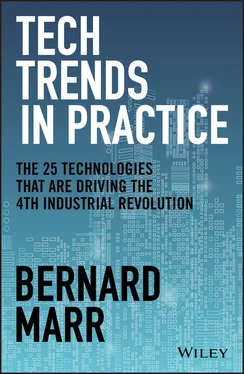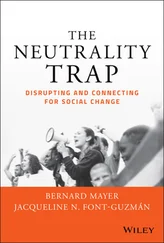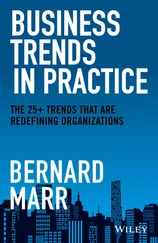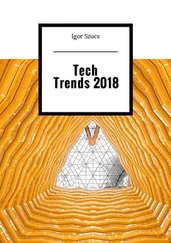The problem is many of these devices that connect to the internet have little or no built-in security – and even when they do, users often neglect to take basic security precautions, like setting a password. This makes the problem of botnets much worse – and also opens up devices to data theft. In other words, your smart devices could potentially leak your data, and offer easy access points to anyone looking to steal it.
Particularly for organizations – but really, for anyone with an IoT device – it’s vital to take the necessary steps to secure your devices and data. As well as protecting devices with passwords, this may include:
Routinely ensuring devices are up to date with the latest version of software. New weaknesses are constantly being found, and patches are released regularly to fix security gaps. Hitting the “update later” option could leave your system vulnerable to attack.
Auditing devices on a regular basis. Companies increasingly allow employees to connect their own devices to company networks (what’s known as “bring your own device”), but this can create security headaches. Keep a record of every device that has access to your network, including company devices, and ensure all devices are up to date with the latest operating system.
Segmenting networks so that different parts of the network that don’t need to talk to each other are kept isolated from each other. Similarly, if something doesn’t need to be connected to your network, then don’t connect it.
Keeping an eye out for botnets. Analyzing your network traffic is the best way to spot this. If you notice your devices are habitually connecting or sending data to destinations you don’t recognize, they may need updating or be taken offline.
Blockchain (Trend 6) may play an increasing role in IoT security. According to one report, the use of blockchain technology to secure IoT devices and data doubled during 2018. 8The powerful encryption used to secure blockchains makes it very hard for attackers to penetrate even one part of the chain.
How to Prepare for This Trend
Despite security threats, the IoT offers incredible opportunities for businesses looking to better understand their customers, streamline operations, create new customer value propositions, and drive revenue – providing you prepare your organization accordingly. Here are a few key steps to help prepare for this trend:
Consider how the IoT relates to your overarching business strategy. For the IoT to deliver real value, it must be linked to your business goals. What is your business trying to achieve – for example, understanding customers better, reducing operating costs – and how could the IoT propel your business towards those goals?
If you make products, consider whether you could make those products more intelligent. In this age of smart everything (even toilets!), customers increasingly expect their everyday goods to provide more intelligent solutions.
Don’t overlook data storage needs. The IoT brings with it enormous amounts of data. Do you have the storage and computing power to store and make sense of all that data?
Think about how you’ll analyze all that data. There are lots of off-the-peg solutions designed to help you make sense of your IoT-related data.
Make sure your IoT data is accessible to those who need it. Capturing all this data is great, but it must be useful. That means various people in the company need to be able to access and interpret the data, so that they can make better decisions, streamline operations, and so on.
Create a clear IoT security strategy that sets out which department is responsible for minimizing the threat of attack through connected devices, who is responsible for auditing and updating machines on the network, and what to do in the event of a breach.
1 1 Do you know the tenets of a truly smart home? Wired: www.wired.com/brandlab/2018/11/know-tenets-truly-smart-home/
2 2 More than 100 million Alexa devices have been sold: https://techcrunch.com/2019/01/04/more-than-100-million-alexa-devices-have-been-sold/
3 3Hirotec: Transforming Manufacturing With Big Data and the Industrial Internet of Things (IIoT): www.bernardmarr.com/default.asp?contentID=1267
4 4Siemens AG: Using Big Data, Analytics And Sensors To Improve Train Performance: www.bernardmarr.com/default.asp?contentID=1271
5 5ServiceMax: How The Internet of Things (IoT) and Predictive Maintenance Are Redefining the Field Service Industry: www.bernardmarr.com/default.asp?contentID=1268
6 6 Smart Dust Is Coming. Are You Ready? Forbes: www.forbes.com/sites/bernardmarr/2018/09/16/smart-dust-is-coming-are-you-ready/#27afb4125e41
7 7 Lessons from the Dyn DDoS Attack, Schneier on Security: www.schneier.com/essays/archives/2016/11/lessons_from_the_dyn.html
8 8 Almost half of companies still can’t detect IoT device breaches, reveals Gemalto study: www.gemalto.com/press/Pages/Almost-half-of-companies-still-can-t-detect-IoT-device-breaches-reveals-Gemalto-study.aspx
TREND 3 From Wearables to Augmented Humans
The One-Sentence Definition
This trend harnesses artificial intelligence (AI, Trend 1), the Internet of Things (IoT, Trend 2), Big Data (Trend 4), and robotics (Trend 13) to create wearable devices and technology that help to improve the physical – and potentially mental – performance of humans, and help us lead healthier, better lives.
What Are Wearables and Augmented Humans?
Perhaps the most prevalent examples of wearables today are fitness tracker bands and smart watches – small, easy-to-wear devices that typically monitor our activity and provide insights that help us lead healthier, better, more productive lives. However, the term “wearable” doesn’t necessarily mean something that you strap onto your wrist or wear elsewhere on your body; it also extends to “smart” clothing, such as running shoes that can measure your running gait and performance, advances like robotic prosthetics, and robotic wearable technology used in industrial settings.
As technology gets smaller and smarter, the sheer range of wearables is going to expand enormously – and new, smaller, smarter products will emerge to supersede the wearables we’re familiar with today. For example, we already have smart glasses, but these are likely to be replaced by smart contact lenses (see practical applications later in the chapter). And after that, smart contact lenses will likely be replaced by smart eye implants.
Advances like this lead many to believe that humans and machines will eventually merge to create truly augmented humans – “transhumans” or humans 2.0 if you like, where the human body is “souped up” like a sports car to achieve enhanced physical and mental performance. This would transform the world of medicine – some believe disabilities as we know them today won’t exist in the future – and, eventually, may even challenge our understanding of what it means to be human.
Sound far-fetched? Not at all when you consider that we already have advanced robotic limbs that can replace human limbs and, thanks to AI, be controlled by the wearer’s thoughts (more on this coming up). And we won’t just be looking at physical augmentations, either. AI for the human brain is already in development. Companies like Facebook are racing to develop brain–computer interfaces that could, in theory, allow you to type your Facebook status update using your mind instead of your fingers (telepathic typing, to use the vaguely creepy technical term). 1Similarly, Elon Musk’s Neuralink company is working on a brain–computer interface that would help people with severe brain injuries. Musk, who has spoken openly about his concerns for the human race as machines become increasingly intelligent, believes merging with machines and enhancing our human capabilities may be the best way to stop us being wiped out by our intelligent creations, or turned into their “pets.” 2
Читать дальше












